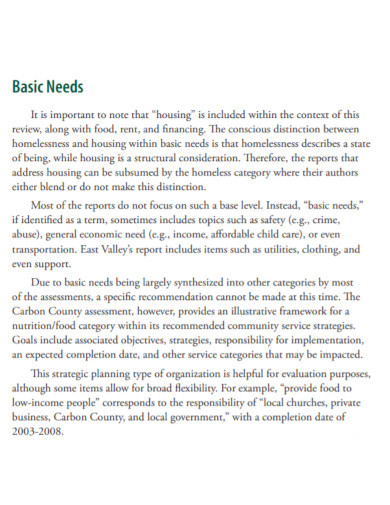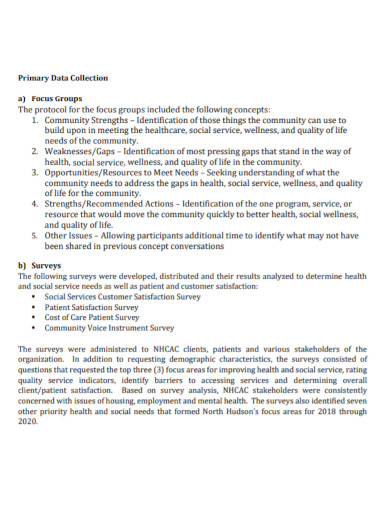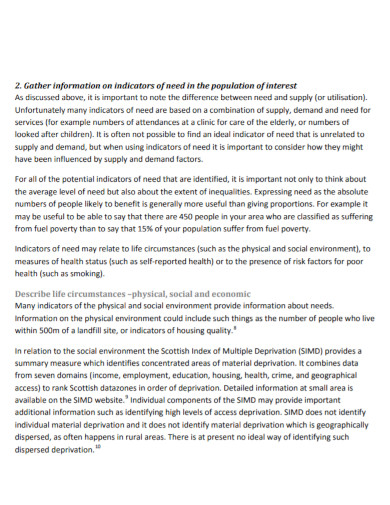4+ Social Service Needs Assessment Examples to Download
People across the lifespan, from children to seniors, have varying needs, including health care, educational support, and a combination of these or more. Given the differences in their needs, a custom service plan can help address such needs effectively. There are a lot of social service options available to the community, namely, in-home care, facility care, financial support, community-based services, and a whole lot more. But what if they need more than that? This is when a comprehensive social service needs assessment should come into play. As a social worker, it is your responsibility to thoroughly assess the needs of the communities served.
We understand that starting on the right foot can be a challenge. This is why we give you a selection of social service needs assessment templates and examples to give you ideas and help streamline your work. Hope you find the one that you need.
4+ Social Service Needs Assessment Examples
1. Social Service Needs Assessment Template
2. Health Social Service Needs Assessment
3. Basic Social Service Needs Assessment
4. Community Social Service Needs Assessment
5. Social Care Service Needs Assessment
What Is a Social Service Needs Assessment
A needs assessment is a systematized process that social workers undertake to collect and analyze data and determine the level of help required to meet an individual’s and/or family’s needs. Given that not everyone is eligible for community-based support, this assessment can also help the local authority examine the eligibility of the target population and get a full picture of the type of care and support needed, which will take in the form of a service or care plan.
How to Make a Social Service Needs Assessment
Creating a needs assessment for social services may not be as easy as you think. There are a lot of aspects you need to look into, considering how complex an individual’s needs are. So, if you’re not sure where to start, we give you tips to help you get on the right map.
Tip 1: Start by Collecting Data
Begin by gathering demographics. This is the first step in creating your social needs screening tool as this can help in examining your target communities’ eligibility in the later part. You may use a variety of formats, such as tabular, checkbox, or anything that you find comfortable working with. When creating this, make sure the resources or referrals available line up with their profile.
By collecting demographics, you can clearly determine the right organizations or providers who you will work with to help the beneficiaries according to their needs.
Tip 2: Ask the Right Questions
After gathering data/demographics, use them well in creating your screening questionnaire. By gathering demographics, you should be able to determine the gap between what is determined as a necessary level of resources and what resources actually exist. This means identifying what the community needs that the available resources can help with. For example, in the case of underserved communities. In this case, you need to make sure there are healthcare providers, educators, and other community-oriented organizations accessible.
Tip 3: Identify Assets (Available Resources)
Identify the types of assets you’ll need in the community. This will be your guiding light in creating your social needs assessment and developing your programs. Assets are also referred to as resources, which necessary in the program’s success. These may include but not limited to:
– organizations
– people (volunteers, community members, and experts)
– funding
– policies
Tip 4: Create an Action Plan
After you have gathered and analyzed the data, assets, and results, it’s time you create an action plan. Your action plan involves the exact steps and activities you want to take, and is deeply rooted in the findings of your needs assessment.
A good tip, choose the key findings you want your program to focus on. List your response or intended activities for each key finding and make sure they all work towards addressing the need.
FAQ
What If the Assessment Finds That the Individual Does Not Need Help?
Very simple. Give the candidate beneficiary a piece of advice about where they can get help in the community.
How Long Does It take for the Results to be Available?
Results can be given usually within a week. The results will cover the kind of care and support that can help you, such as a paid caregiver, meals delivered to your home, customized living options, and many more.
What If the Assessees Refuse to Take the Assessment?
Simply cancel. Allow the assessees to send their complaint letter about the assessment or the possible service they will receive. But don’t cancel just yet. Try to convince them, but not forcibly, to be screened for social support.
The process itself of assessing the needs of target communities, and being able to provide help available, is a rewarding task. But sometimes, creating a social screening document can be daunting, making your task exhausting. So to free you of these, browse our examples today to help you get started on the right map.


![7+ Social Service Needs Assessment Examples [ Community, Health, Children ]](https://images.examples.com/wp-content/uploads/2021/05/7-Social-Service-Needs-Assessment-Examples-Community-Health-Children-.jpg)




